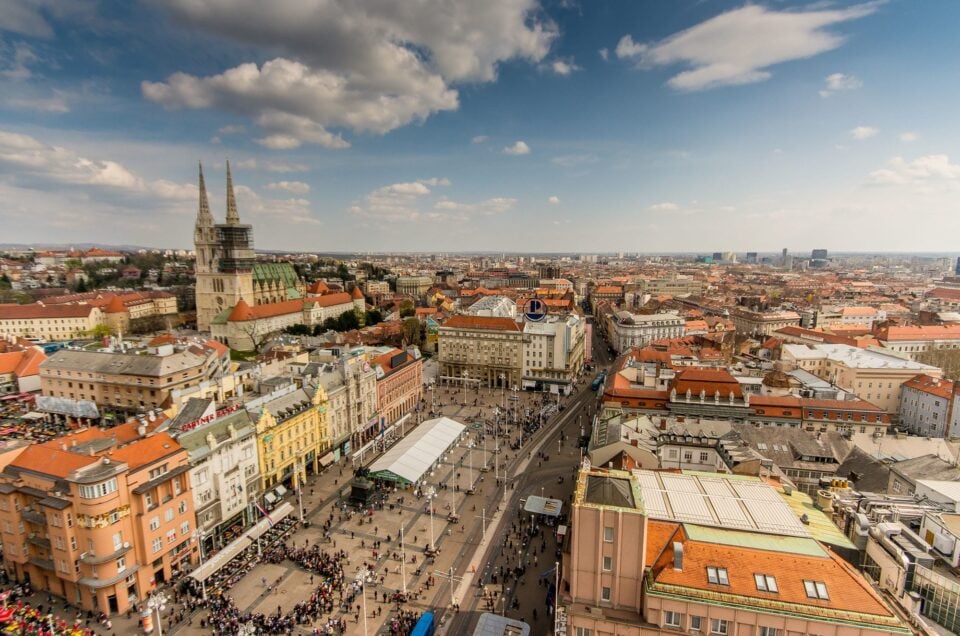Zagreb, the capital of Croatia, is divided between the Upper City and the Lower City, and each of them has something to see, there is where to walk: many galleries, museums, architectural monuments, cathedrals and parks. But all the most interesting sights of Zagreb can be viewed in one day, because most of them are located close to each other.
Upper Town

The Upper Town (Gornji Grad) is home to most of the historical sights of the Croatian capital. Gornji Grad is located on two hills – Kaptol and Hradec. Once there were separate settlements here, but over time they merged, and a new street – Tkalchicheva-settled between the hills.
Gornji Grad is a favorite walking spot not only for tourists, but also for Zagreb residents. Beautiful cobblestone streets attract numerous cafes and bakeries-the latter offer delicious fresh bread and a variety of pastries. In the evening, Verkhny Grad is especially romantic: old gas lanterns are still used to light it, which are lit by lamplighters.
Cathedral of the Ascension of the Virgin Mary
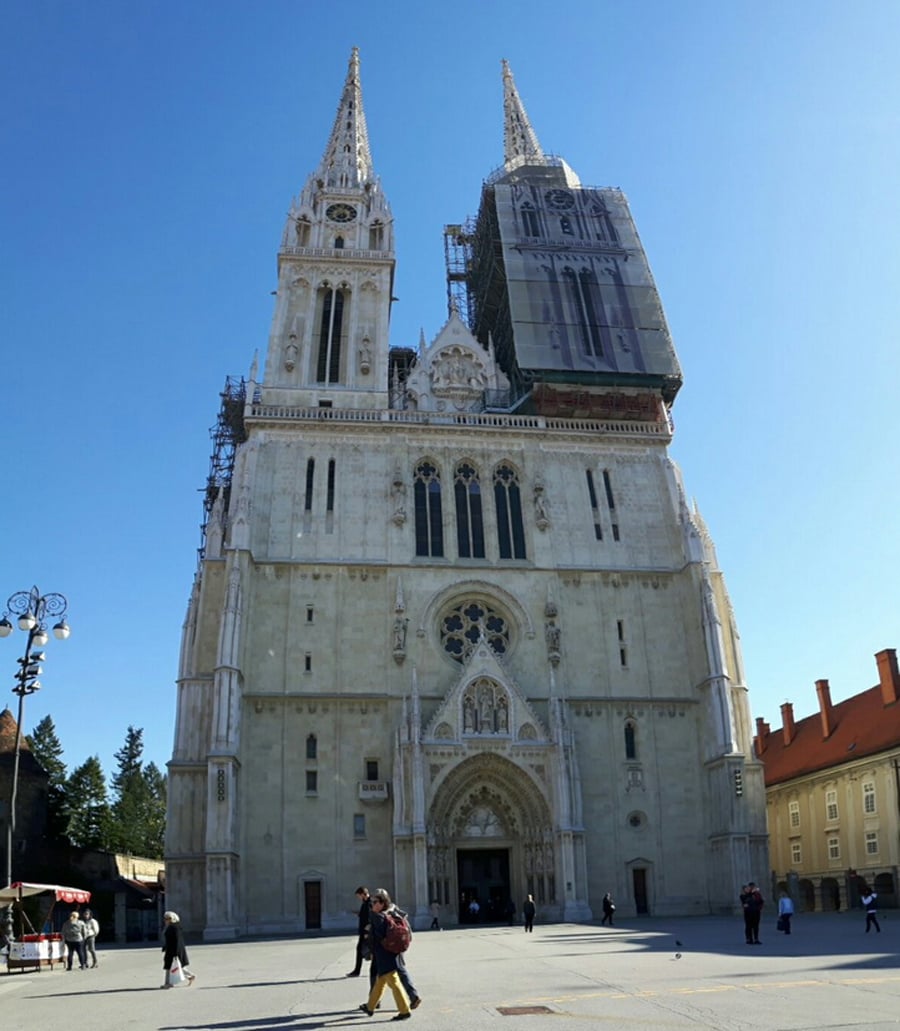
The Cathedral of the Ascension of the Virgin Mary in Zagreb is a landmark of all Croatia, because it is the largest Catholic church in the country. The cathedral is located on Kaptol 31 Square, and thanks to its two towers with a height of 105 m, it is clearly visible from anywhere in Zagreb.
The building is decorated in neo-Gothic style, the windows are decorated with colorful stained glass windows. Inside, everything is simple: a beautiful altar, a carved pulpit and many carved comfortable benches. Going inside, you need to be mentally prepared for the fact that a transparent glass sarcophagus with the ashes of Blessed Aloysius Stepinac, who lived in Croatia during World War II, is placed on the altar.
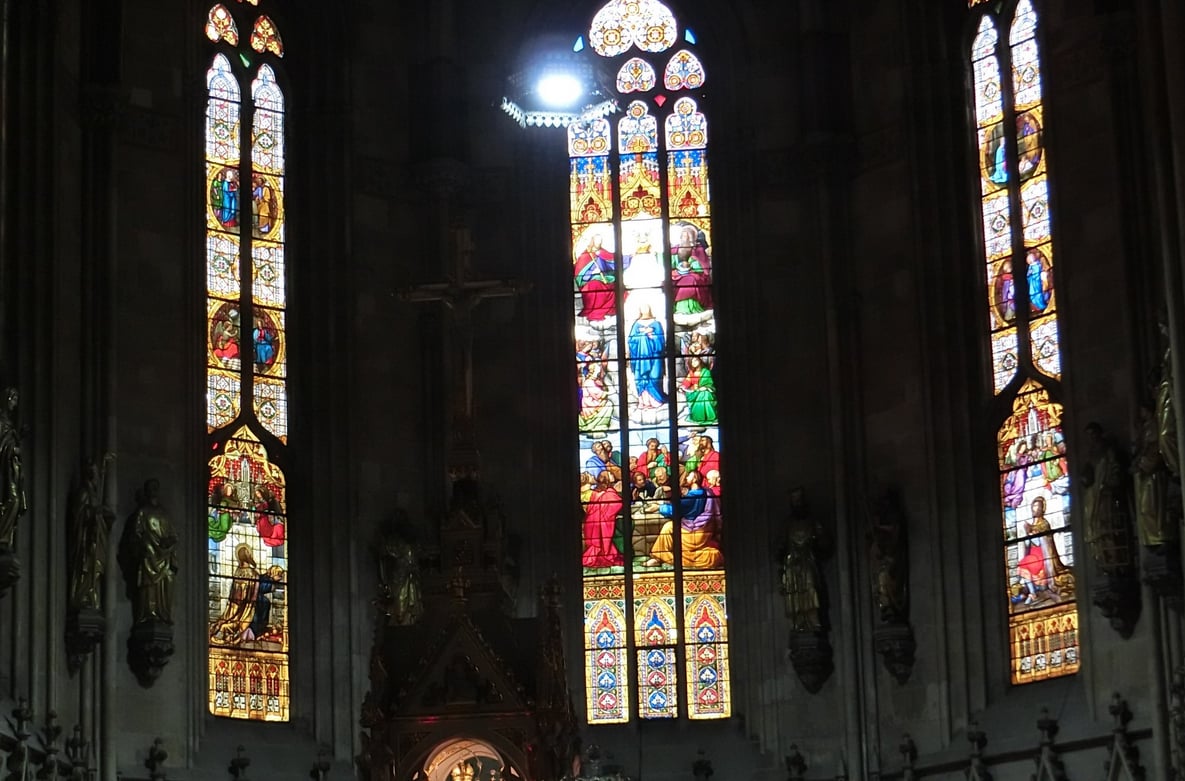
The Church of the Ascension of the Virgin Mary is in operation. At the entrance, there is a schedule, you can see in advance when the service is being held and attend it. During the service, the solemn sounds of the organ are heard, strong male singing sounds-just close your eyes and you can imagine that this is an opera. During the mass, it is allowed to take photos and shoot with a video camera.
Access to the interior stops around 19: 00. But if the entrance is already closed and there are still people inside, then you can try to go through the side door on the left side of the building, where parishioners usually leave.
Tkalchicheva Street
Zagreb residents simply call Tkalčičeva Street “Old Tkalča”. A walk along it is included in the program of almost all tourist routes that introduce you to the sights of Zagreb. There are always a lot of people here, very lively and noisy – not only in season, but even in rainy autumn weather. But still, the townspeople managed to preserve a special, incomparable provincial atmosphere.
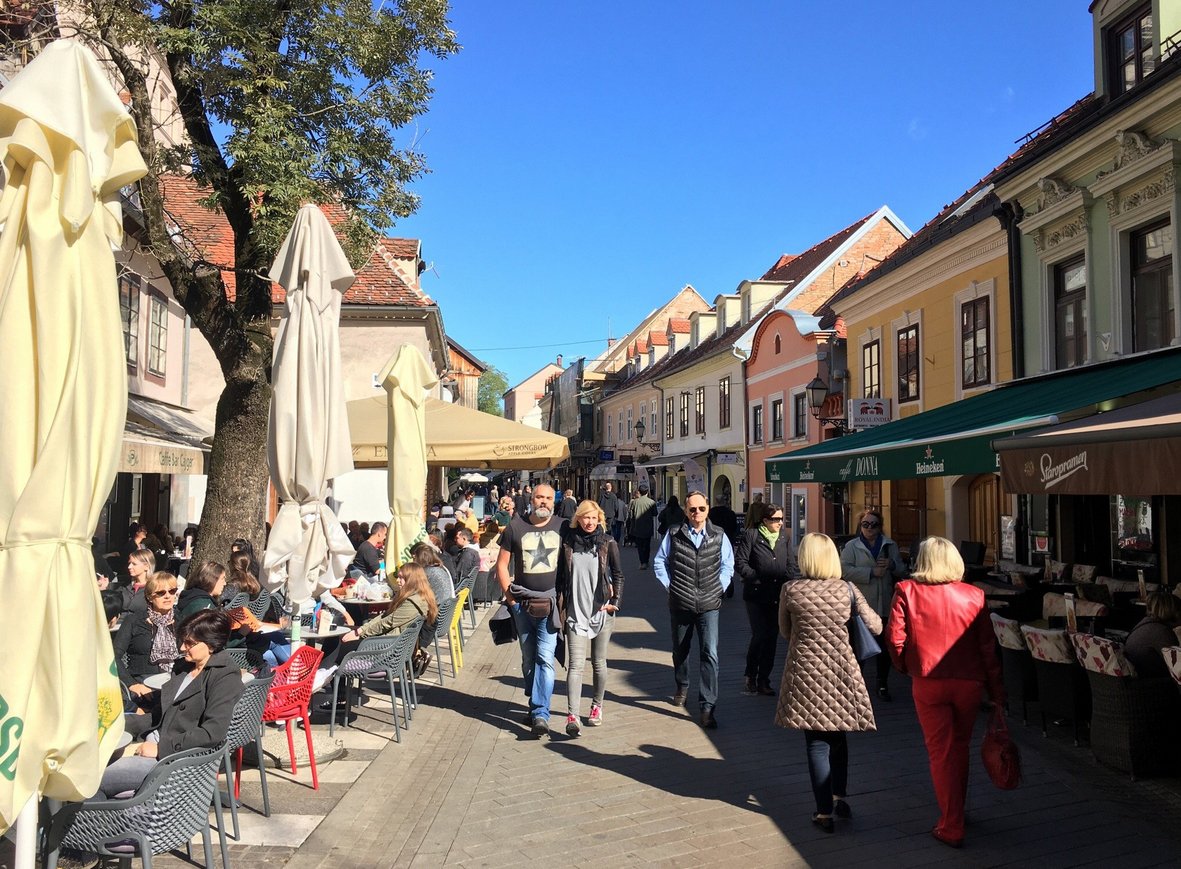
This is where most of the restaurants, bars, cafes and souvenir shops located in Gornji Grad are located. Similar establishments are found everywhere here, and all of them occupy old restored authentic buildings that are attractions in themselves. As for prices, they vary from minimal to very high.
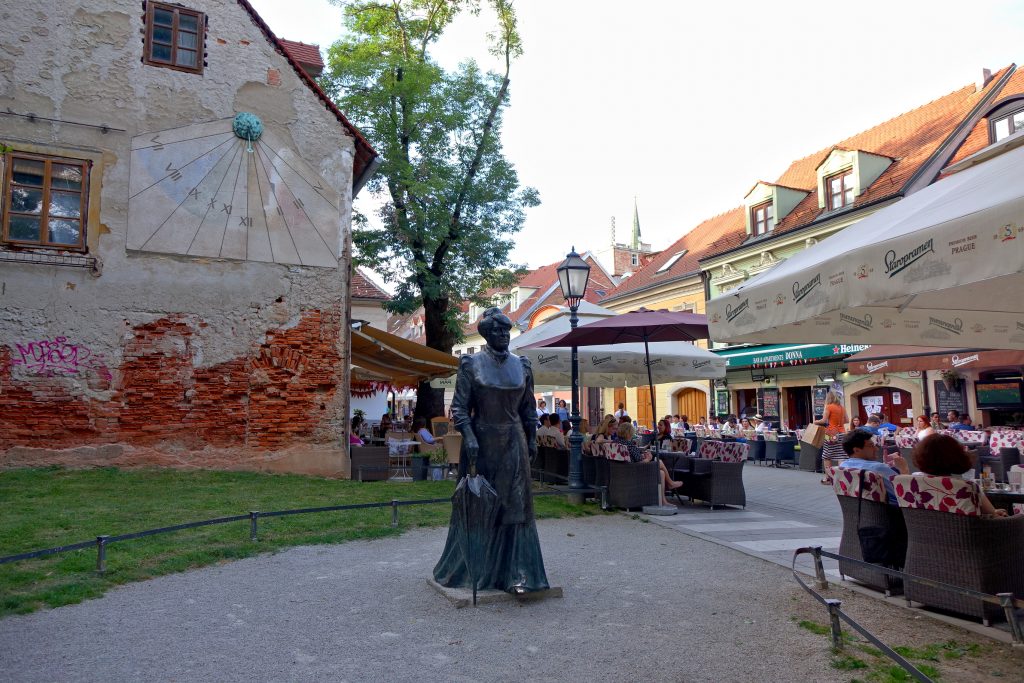
At the beginning of the street there is a monument to the Croatian writer Maria Juric, known under the pseudonym Zagorka. A little further on, there is another monument dedicated to one of the girls Zagorka wrote about, who, due to circumstances, ended up in a brothel. This sculpture turned out to be here not by chance, because in the XIX century there were many brothels on Tkalčičeva.
To the left of the monument there is a modest path leading to a narrow steep staircase-this is the ascent to Hradec Hill.
St. Mark’s Church
St. Mark’s Church is a bright and colorful landmark of the Croatian capital, located on Hradec Hill at Trg Sv. Marka 5.
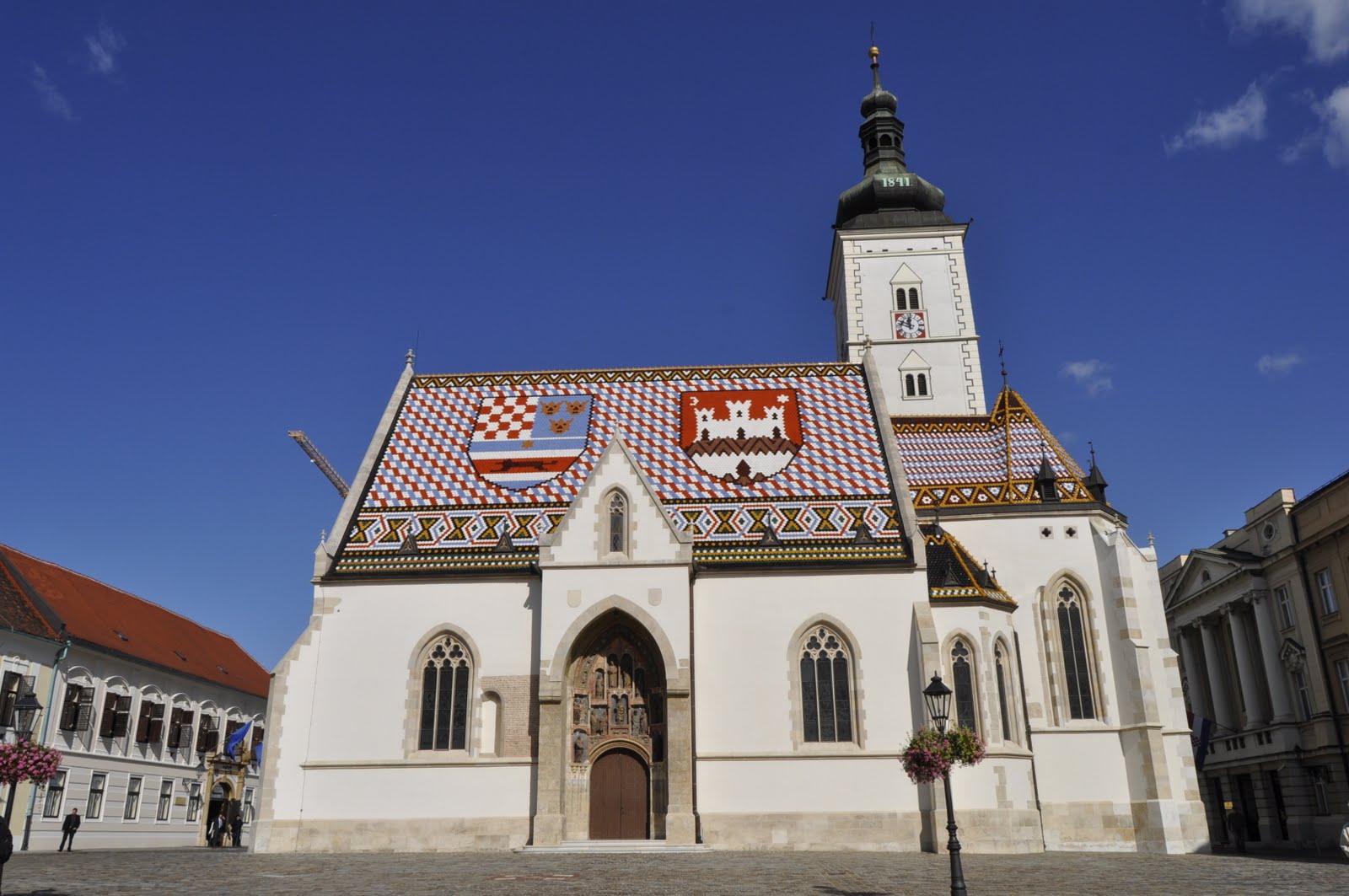
The southern portal of this temple is very interesting, where 15 wooden sculptures stand in separate niches – the Virgin with Joseph and the infant Jesus at the top, 12 apostles at the bottom.
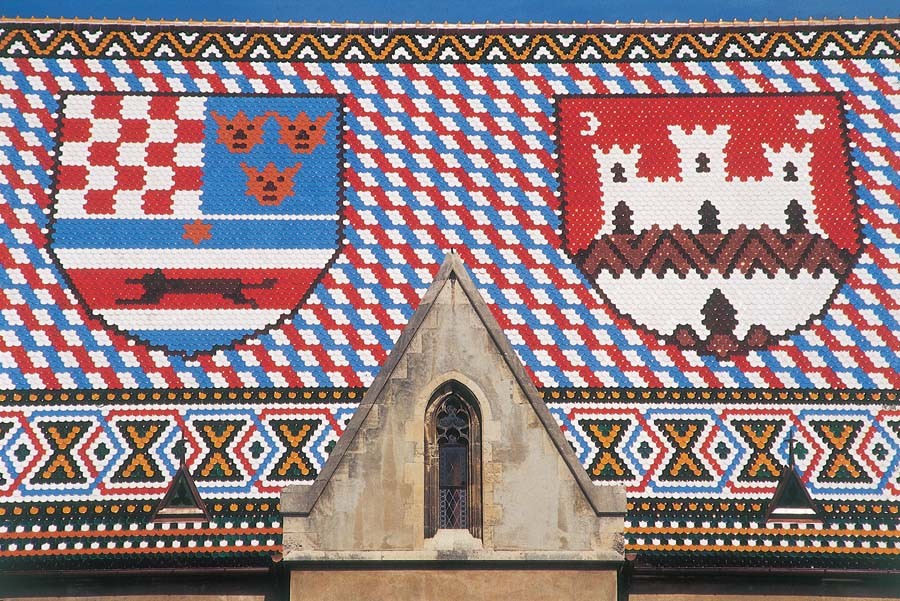
But in Croatia and far beyond, St. Mark’s Church has become famous for its unique tiled roof-so unusual that all visitors to Zagreb rush to see it. On the high and steep slope of the roof tiles of different colors are laid out 2 coats of arms: Zagreb and the Triune Kingdom of Croatia, Dalmatia and Slavonia.
And around the church is a completely deserted stone square – no trees, no decorative objects. Probably so that the eye is not distracted from the colorful roof.
But there are a lot of people here. Mostly tourists-singles and organized groups-who are interested in seeing this unique attraction in Croatia.
Lotrschak Tower
It has already been noted that the Lotrschak Tower is located in the immediate vicinity of the funicular station, at Strossmayerovo šetalište, 9.
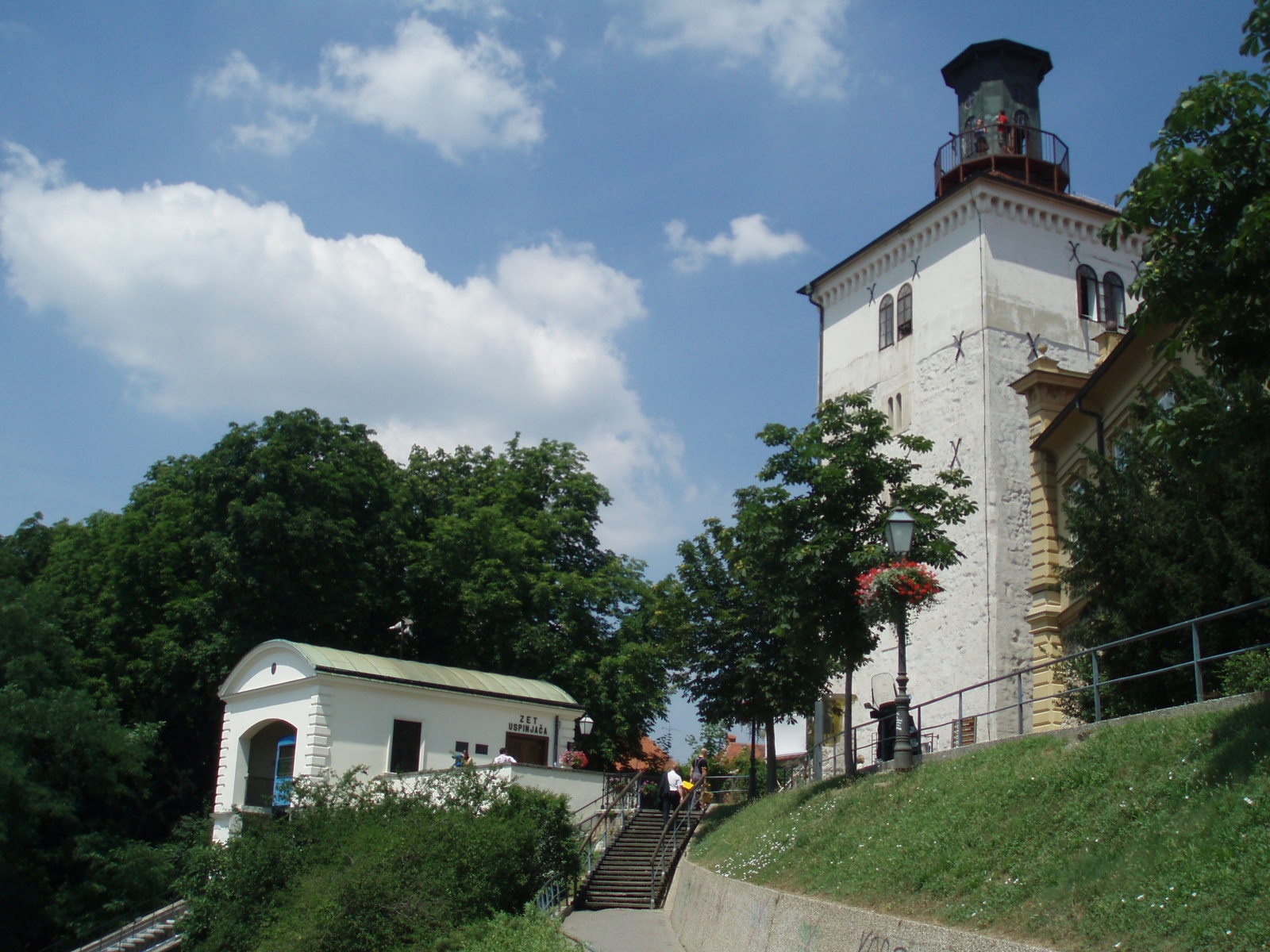
This magnificent square-shaped structure, which served to guard the southern entrance to Hradec, is only a small part of what remains of the ancient fortress walls.
Now on the first floor of the building there is a gift shop and an exhibition gallery where you can see masterpieces of painting.
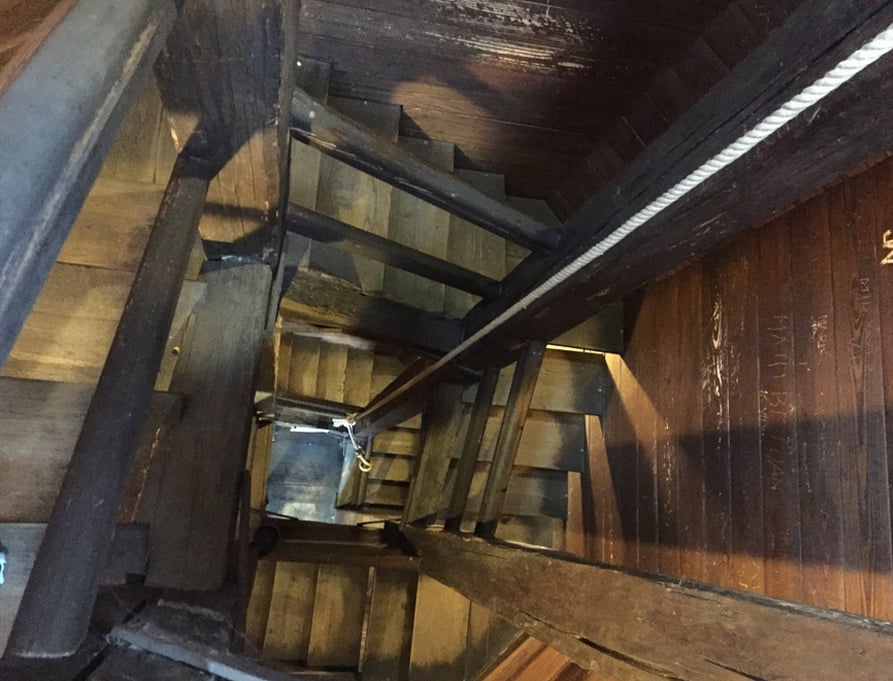
But the main thing that is interesting about the Lotrschak Tower is the observation deck, which is reached by a wooden spiral staircase. To climb it, especially in hot weather, it will take some effort, but the view from above is worth it: you can take a bird’s-eye view of the whole of Zagreb and take unique photos of the sights.
Going up the stairs, you can see a cannon behind a glass partition. Every day, at exactly noon, a deafening shot is heard from it, according to which the townspeople are used to checking their watches.
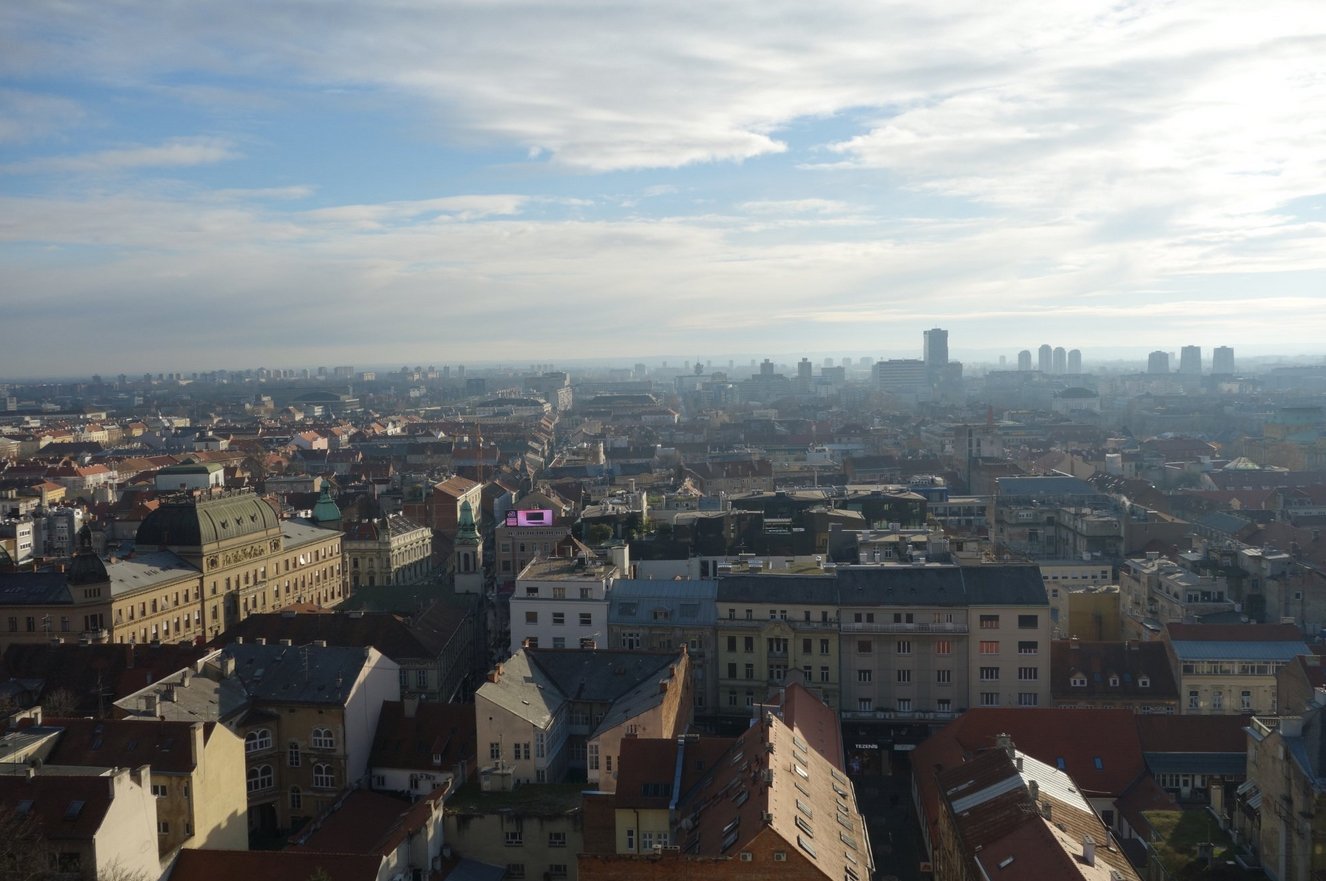
- The entrance to the tower is open: Monday to Friday from 11: 00 to 21: 00, Saturday and Sunday from 11: 00 to 21: 00.
- And you can see this majestic structure from the outside at any convenient time.
Strossmeier Alley
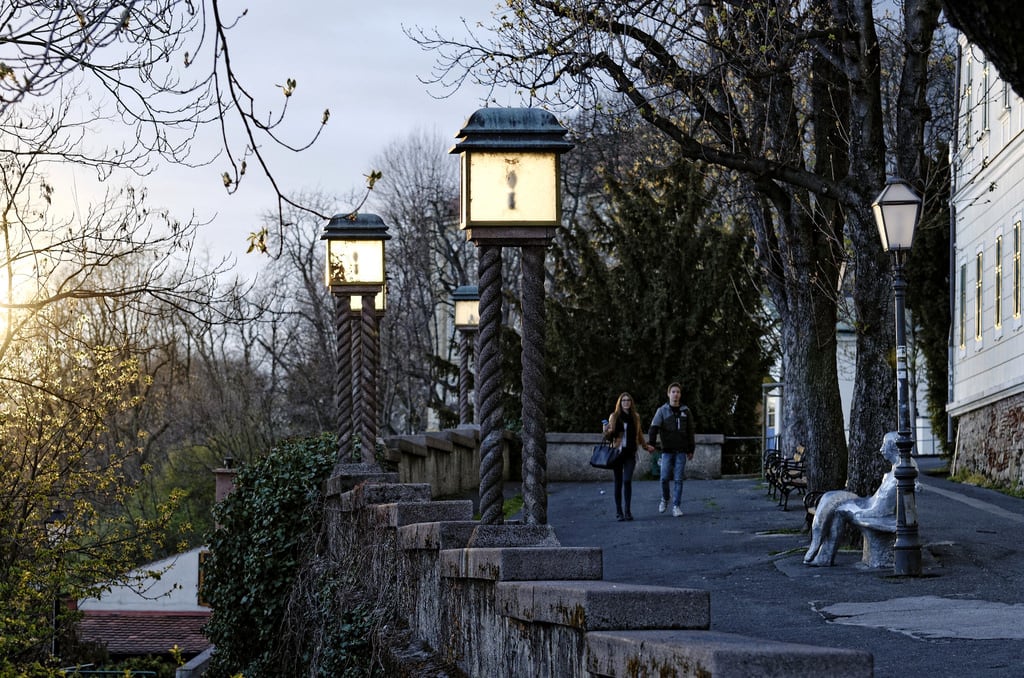
The picturesque Strossmayer Embankment (Strossmayerovo šetalište 16-99) runs along the southern fortress wall of Hradec, starting immediately from the Lotršak Tower.
From this alley, which partly resembles a balcony attached to the fortress wall, you can see beautiful and very spectacular views of the Lower City. In the evening, it is quite crowded, a lot of young people gather here.
This pedestrian alley, paved with cobblestones, leads down to the central town square of Ban Jelacic and to the Lower Grad.
Please note! The Slovenian health resort of Rogaška Slatina is often reached via Zagreb. Read about the healing properties of the water in it and the treatment features here.
Ban Jelacic Square
At the foot of the Kaptol and Hradec hills lies the main square of Zagreb, named after the military leader Josip Jelasica (Trg bana Jelasica) and serving as a kind of border between the Upper Town and the Lower Town.
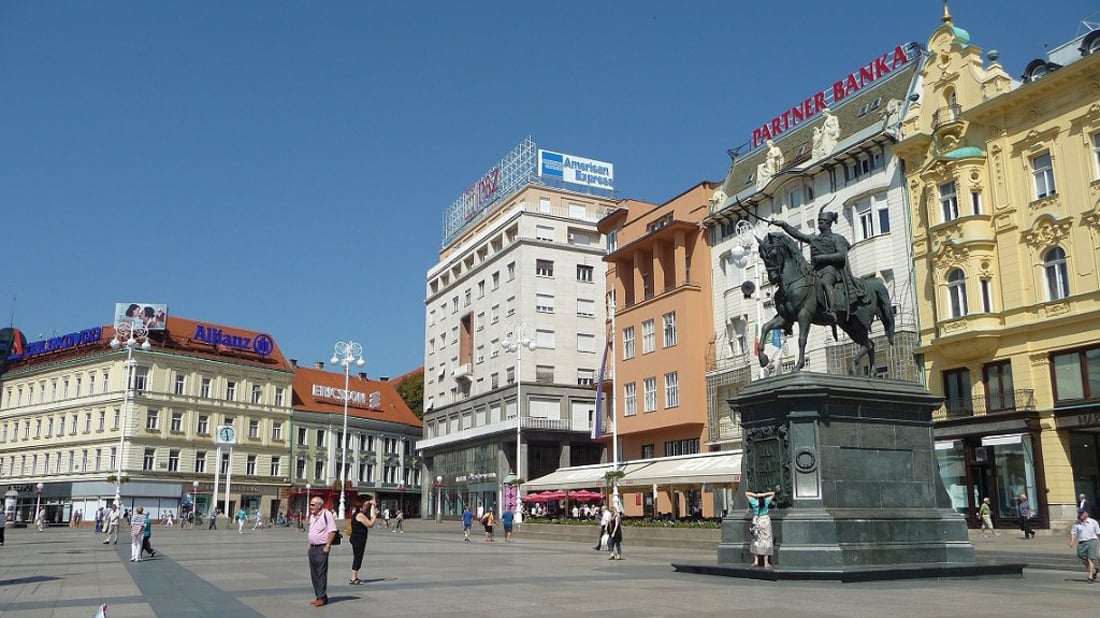
Trg bana Jelasica offers a magnificent view of the city’s main avenue, which is served by many trams. Zagreb’s narrow shopping streets, including one of the most famous ones, Ilica, also extend from the same square. It hosts a variety of social events and fairs, while numerous cafes and restaurants can be found in the surrounding buildings.
By the way, a tourist office has been opened in house No. 11. In addition to a detailed map of the city, you can take avenues with photos and descriptions of the sights of Zagreb.
Here, or rather on the nearest Tomicha Street, there is a funicular station. You can use it to get to the Upper Town, directly to the Lotrschak Tower. This line is the shortest in the world – only 66 m, the journey time is about 1 minute.
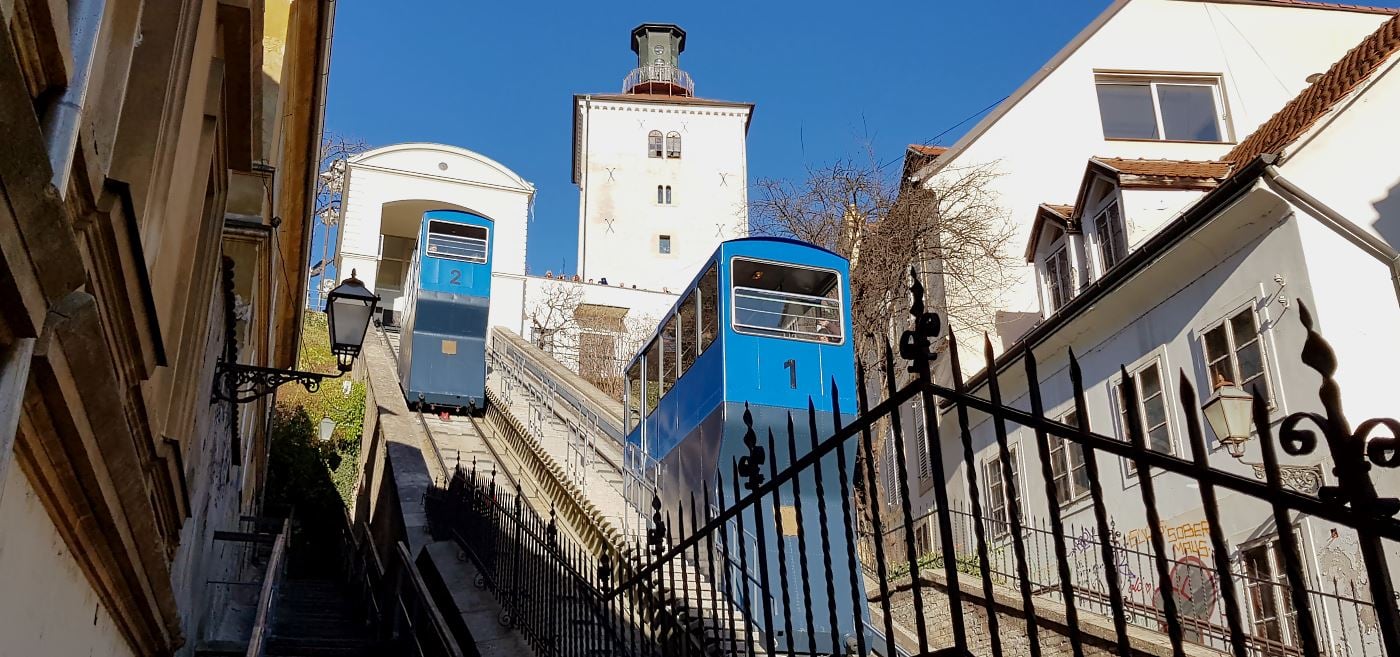
- The funicular runs from 6: 30 to 22: 00, departing every 10 minutes.
- The cost of a travel ticket is 5 kuna.
- Where to find: Tomičeva ul. 7A, 10000, Zagreb, Croatia.
Pula — an ancient city on the Adriatic coast
Grik Tunnel
Before leaving Jelacic Square for the New Town, you should check out the Grik underground Tunnel, located in the heart of Zagreb, under the historic Hradec district.
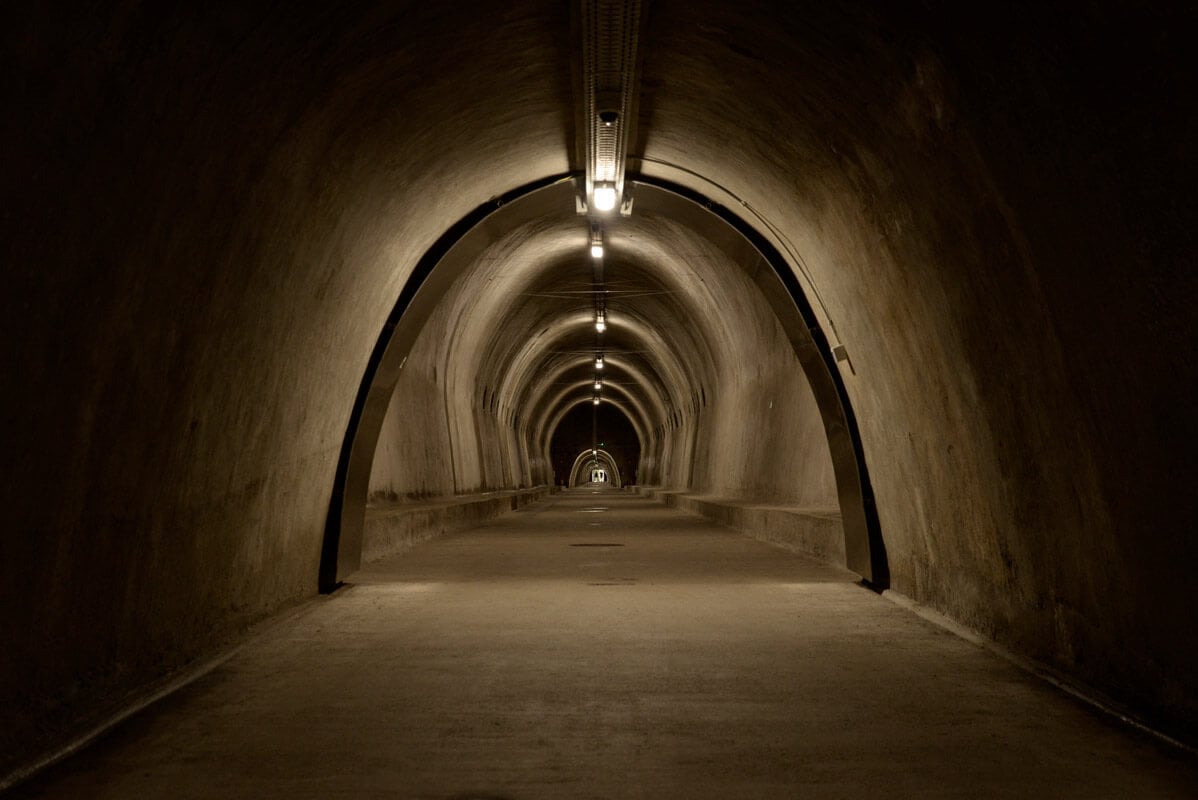
From the central hall (about 100 m2) of the tunnel, 2 main corridors extend for 350 m. One of them opens from the east side – in the courtyard on Radichevaa Street 19, and the other from the west-on Mesnichka Street. There are 4 more side branches that extend south to Yelacic Square – one of these exits is located on Tomic Street 5a, the second is located on Ilitsa Street.
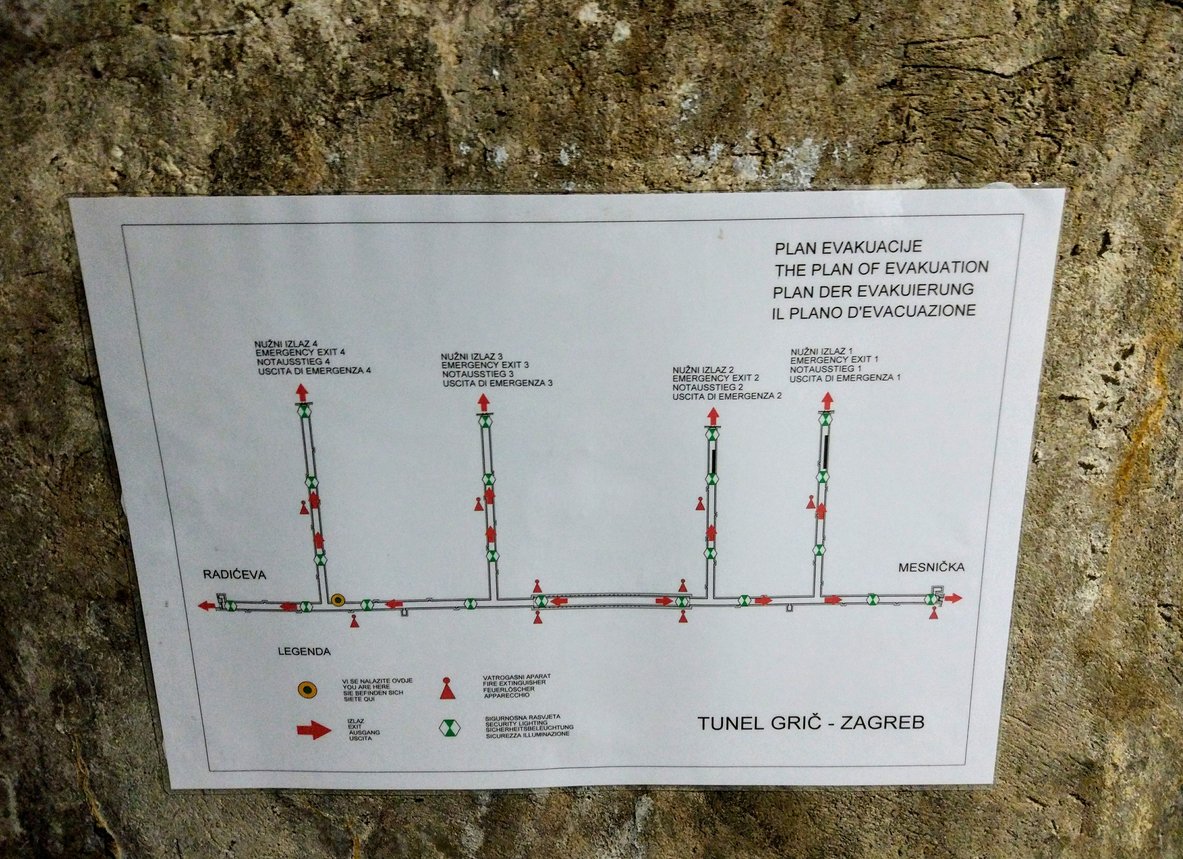
The tunnel was created during the Second World War, was recently reconstructed and began to be used as a place for cultural events. From time to time, various exhibitions with interactive elements are organized there, and concerts are held.
- This Zagreb attraction is open daily from 9: 00 to 21: 00.
- Admission is free.
Donji Grad
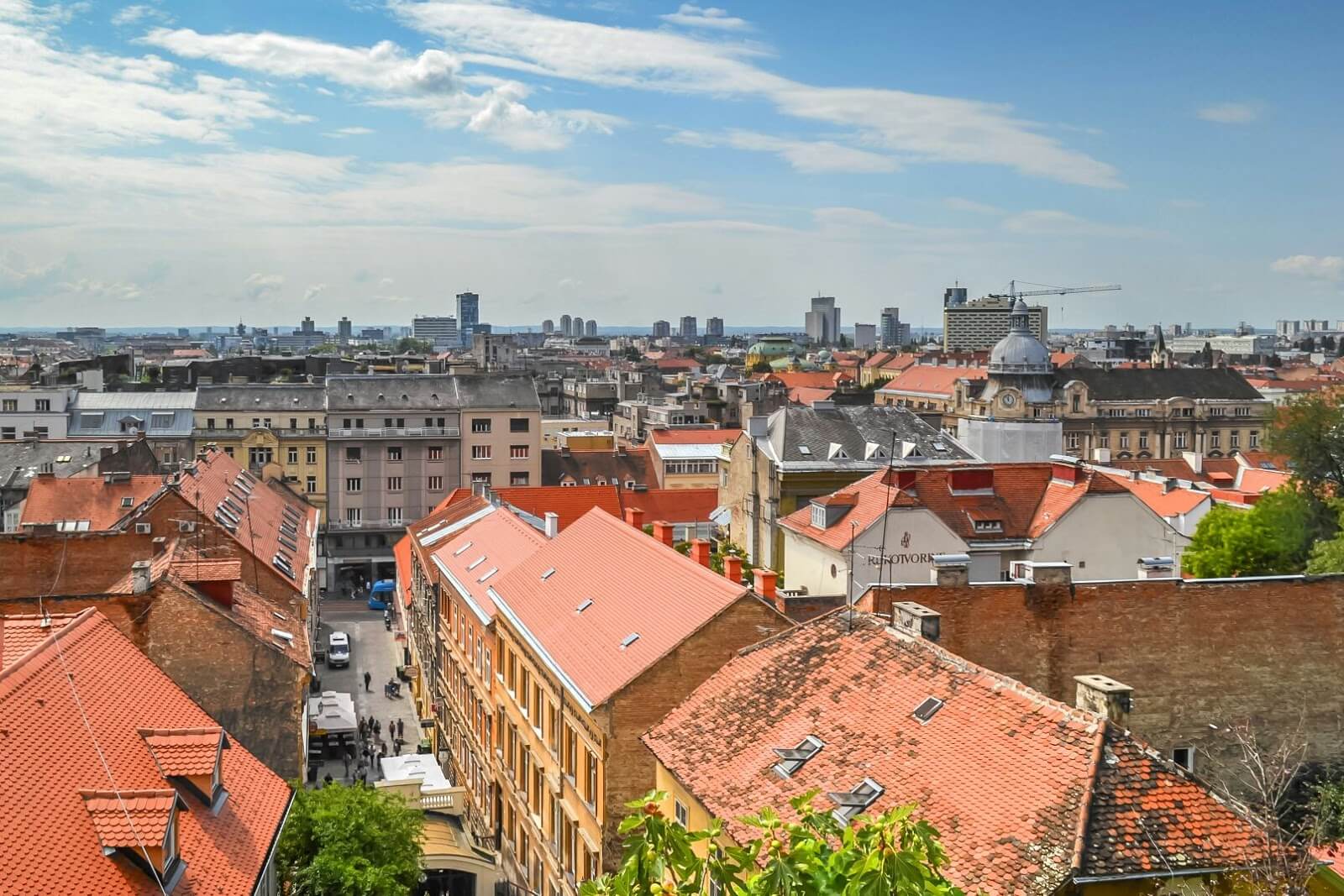
Donji Grad, which is dominated by buildings of the XIX century, was built very thoughtfully. Numerous parks and squares with fountains, sycamore alleys and sculptures are arranged in a beautiful chain in the shape of the letter “U” in the flat area in front of the Hradec and Kaptol hills. In Zagreb, they are called “Lenuzzi’s horseshoe” after the architect who designed them.
The structures along these parks have the appearance of closed fortresses: their front facades look out, and behind them are hidden green courtyards.
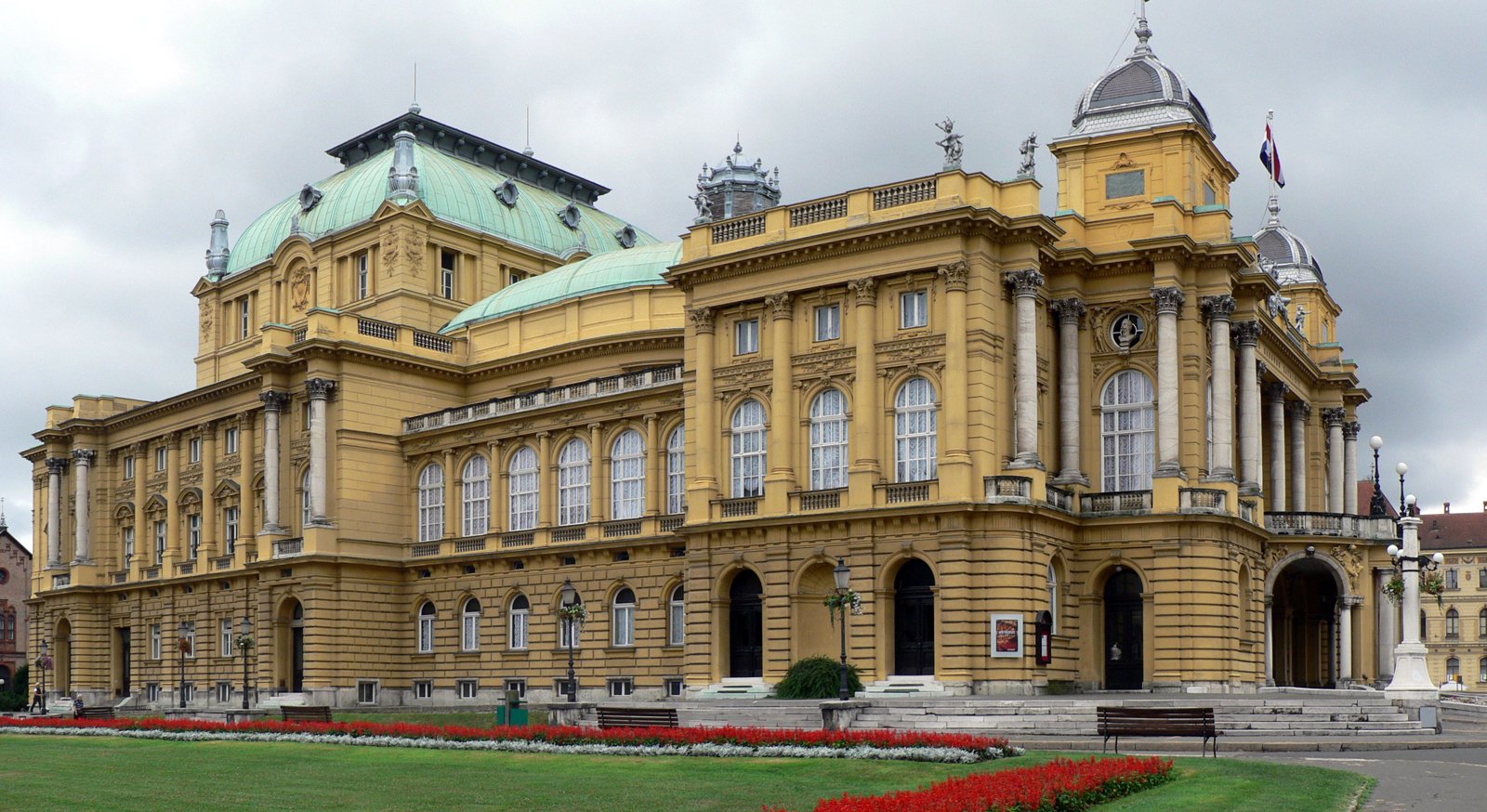
Among the many buildings, the grandiose Croatian National Theater stands out (exact address: Trg Marshala Tita 15). The theater is decorated in neo-Baroque style, and just look at it, it immediately becomes clear-this is the main theater of the country. In front of the main entrance, another attraction is the famous fountain “Source of Life”.
It is in this part of Lower Grad that most of Zagreb’s museums are located: the Art Nouveau Gallery, the Mimar Art Museum, the Art Pavilion, the Museum of Decorative and Applied Arts, the Academy of Sciences and Arts, the Archaeological and Ethnographic Museums. Their doors are open to anyone who wants to see interesting exhibits, get to know more about the history and culture of Croatia.
Rijeka — City attractions with photos and descriptions
Archaeological Museum
The Archaeological Museum of Zagreb, located at Trg Nikole Šubiča Zrinskog 19, contains objects that were found on the territory of modern Croatia. There are several expositions related to the prehistoric, ancient, and medieval periods.
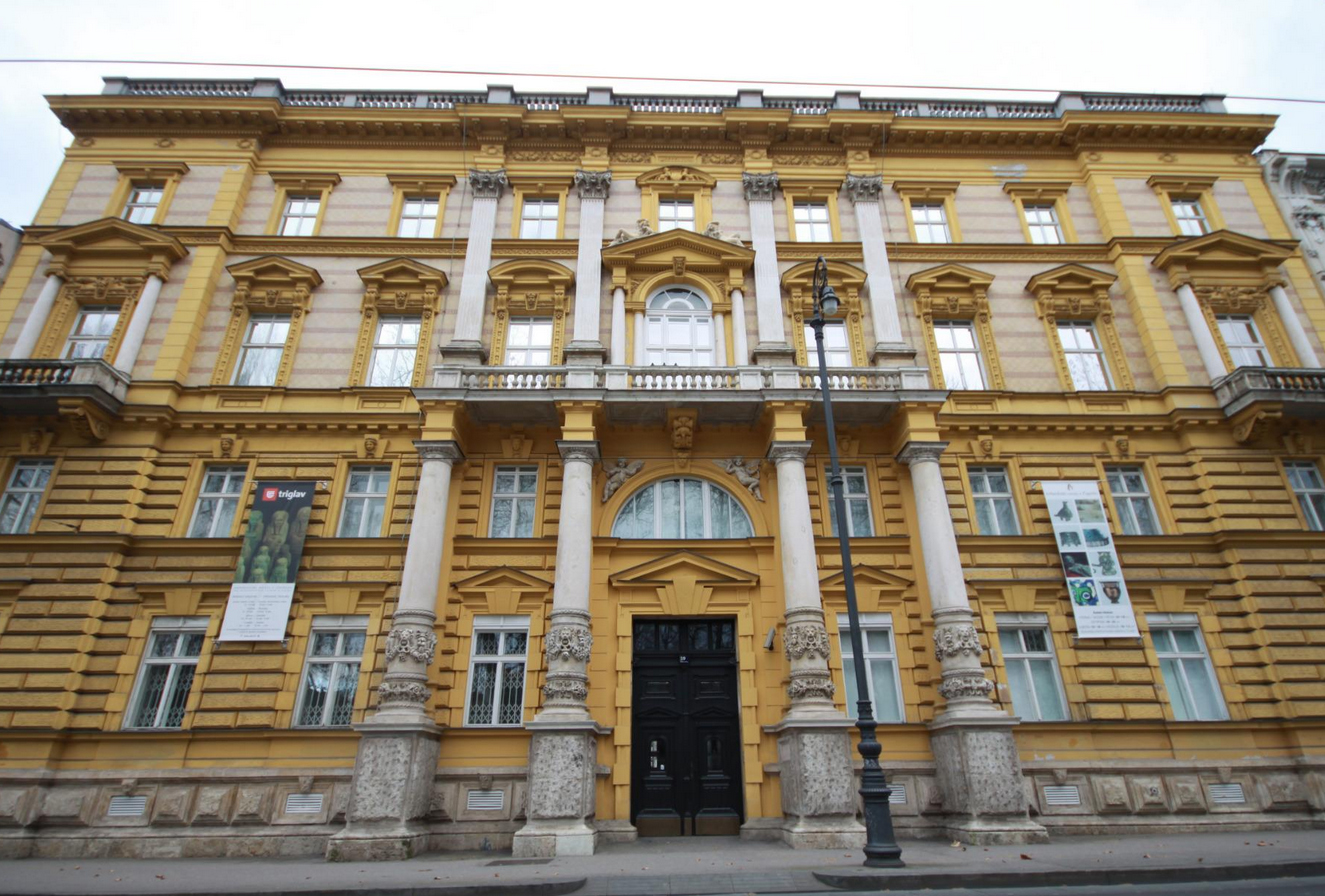
There really is something to see:
- Etruscan writing applied to the cotton ribbons in which the mummy was wrapped;
- objects of Vuchedol culture, including the famous dove;
- items found during excavations of an ancient Roman village in Northern Dalmatia;
- large-scale collection of numismatics.
Viewing starts from the 3rd floor and is accessible by elevator. The elevator is also a landmark, because it is more than 100 years old.
In one of the museum’s halls, a 3D printer is installed that prints a copy of the famous “Vuchedolskaya dove”. There is also a gift shop in the courtyard that sells copies of artifacts.
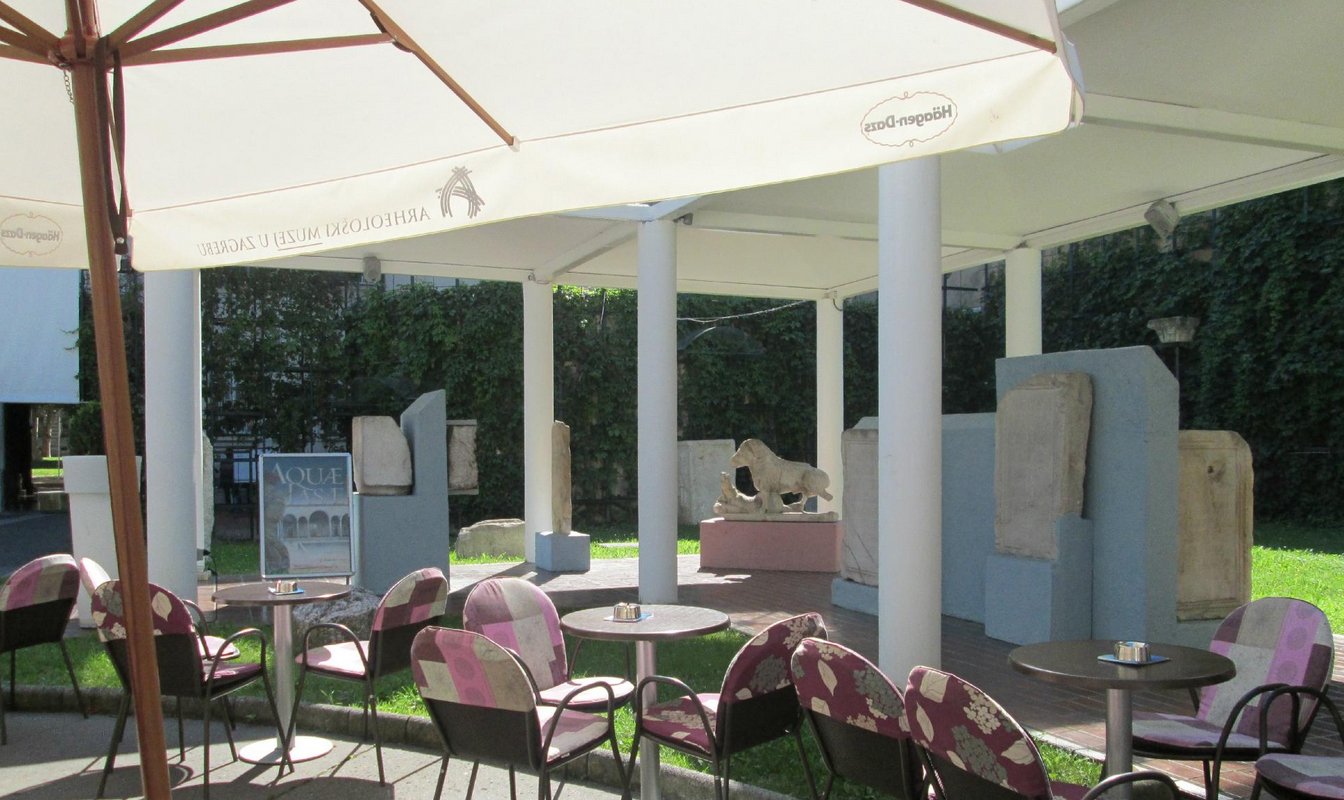
In the courtyard, among the stone statues of the Roman era, visitors are welcomed by a cozy cafe.
- You can visit the museum and view its exhibits at the following times: Tuesday, Wednesday, Friday and Saturday – from 10: 00 to 18: 00, Thursday – from 10: 00 to 20:00, Sunday – from 10:00 to 13: 00.
- The entrance fee is 25 kuna.
Mirogoi cemetery
Near the intersection of Mirogoiskaya highway and Herman Bolle Street is Mirogoi cemetery, address: Mirogoi Aleja Hermanna Bollea 27. You can get to it on foot – it takes about 30 minutes to walk from the center, but it will be more convenient to go from Kaptol Square by buses No. 106 and 226 or by trams No. 8 and 14.

All tourists are eager to visit this attraction – even those who have come to the Croatian capital for a short time and are thinking about what to see in Zagreb in 1 day. This is not surprising, because Mirogoi is recognized as the most beautiful cemetery in Europe.
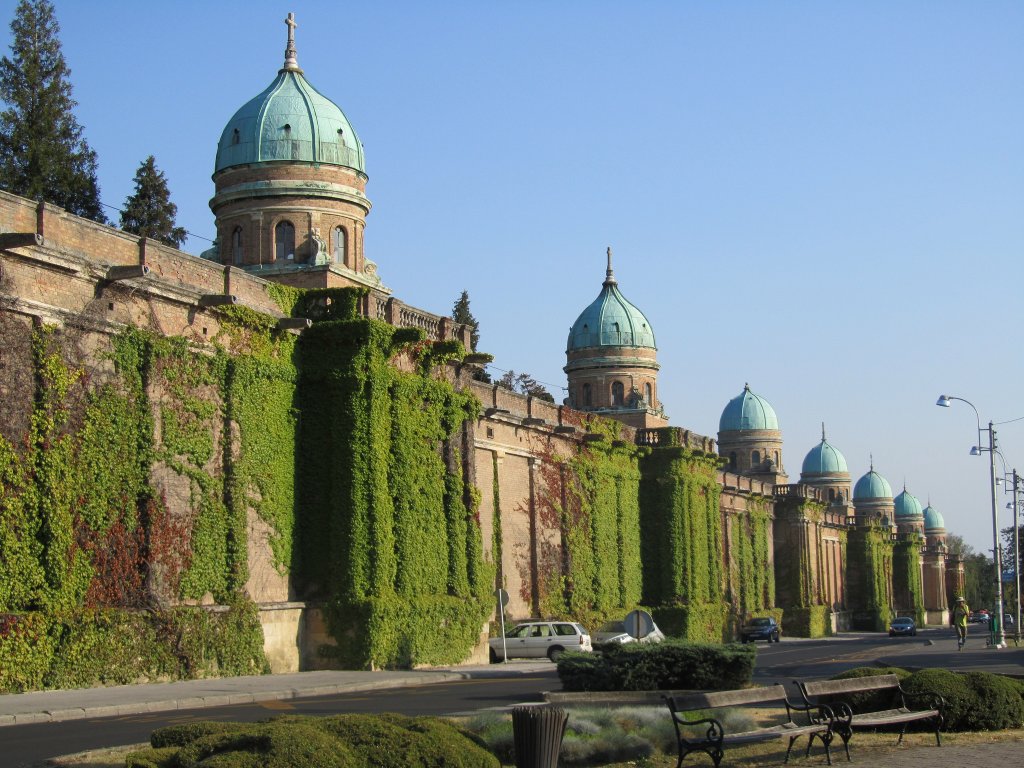
According to the plan of architect Herman Bolle, the Mirogoisk cemetery has the appearance of a fortress-calm and open to all visitors. At the main entrance, on a wide circular base surrounded by four stone towers, stands the majestic Peter and Paul Chapel. The dome of the chapel, painted in blue-green colors, repeats the shape of the dome of St. Peter’s Basilica in the Vatican. The main attraction of Mirogo is its main gate and arcades, located near the western wall. In principle, the entire cemetery is an open-air museum, where you can see such exhibits as sculptures, tombs, crypts, mausoleums.
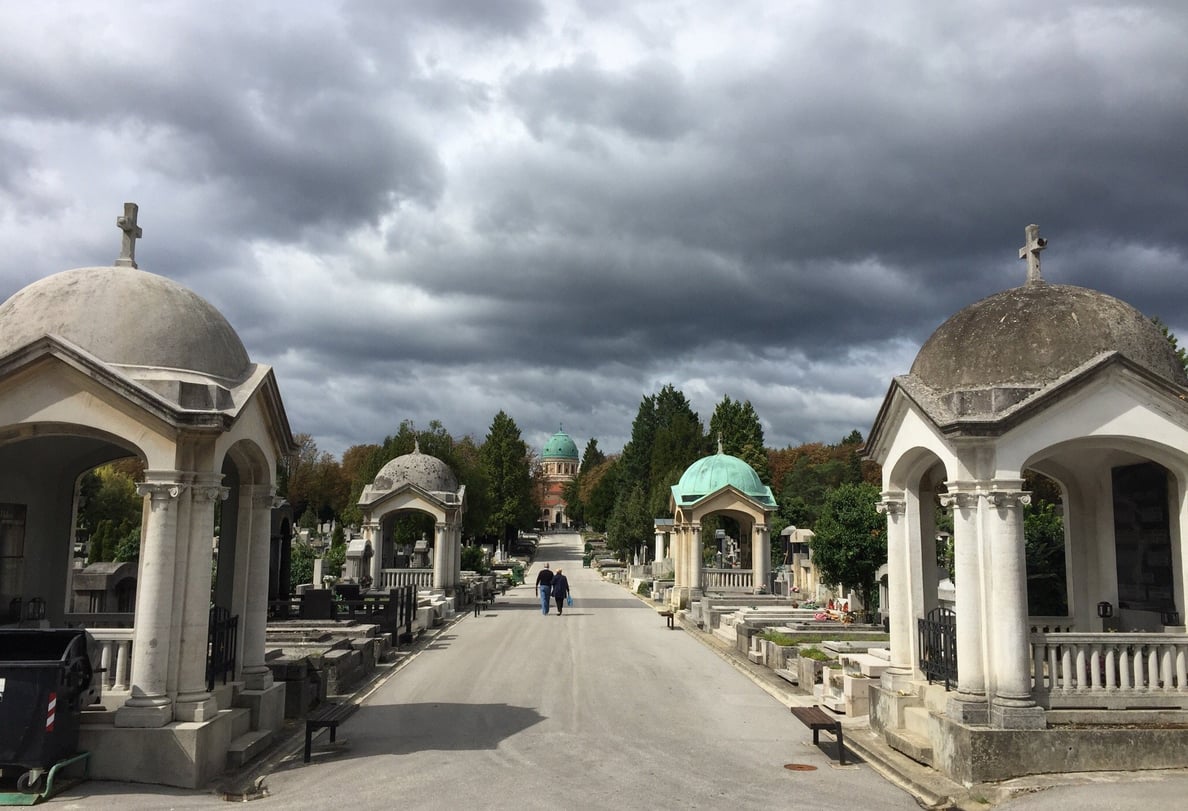
But it is also the burial place of many famous people. There are entire family tombs of prominent Croatian figures here. Also buried are emigrants who came to Croatia from the Russian Empire in the twentieth century. Located on Mirogoe German military cemetery, there are monuments to Yugoslav heroes. There are also monuments to Croats who died in the War of Independence and in the First World War.
- The time of visiting the Mirogoisk cemetery is from 6: 00 to 20: 00.
- Admission is free.
On a note! How to get to the Plitvice Lakes from Zagreb and why they are worth seeing if you happen to be in Croatia, we describe on this page.
Maksimir Park
The oldest park in south-eastern Europe, Maksimirski Park, is located a little away from the main tourist routes of Zagreb. It is located in the eastern part of the city, from the center by tram can be reached in 10-15 minutes.
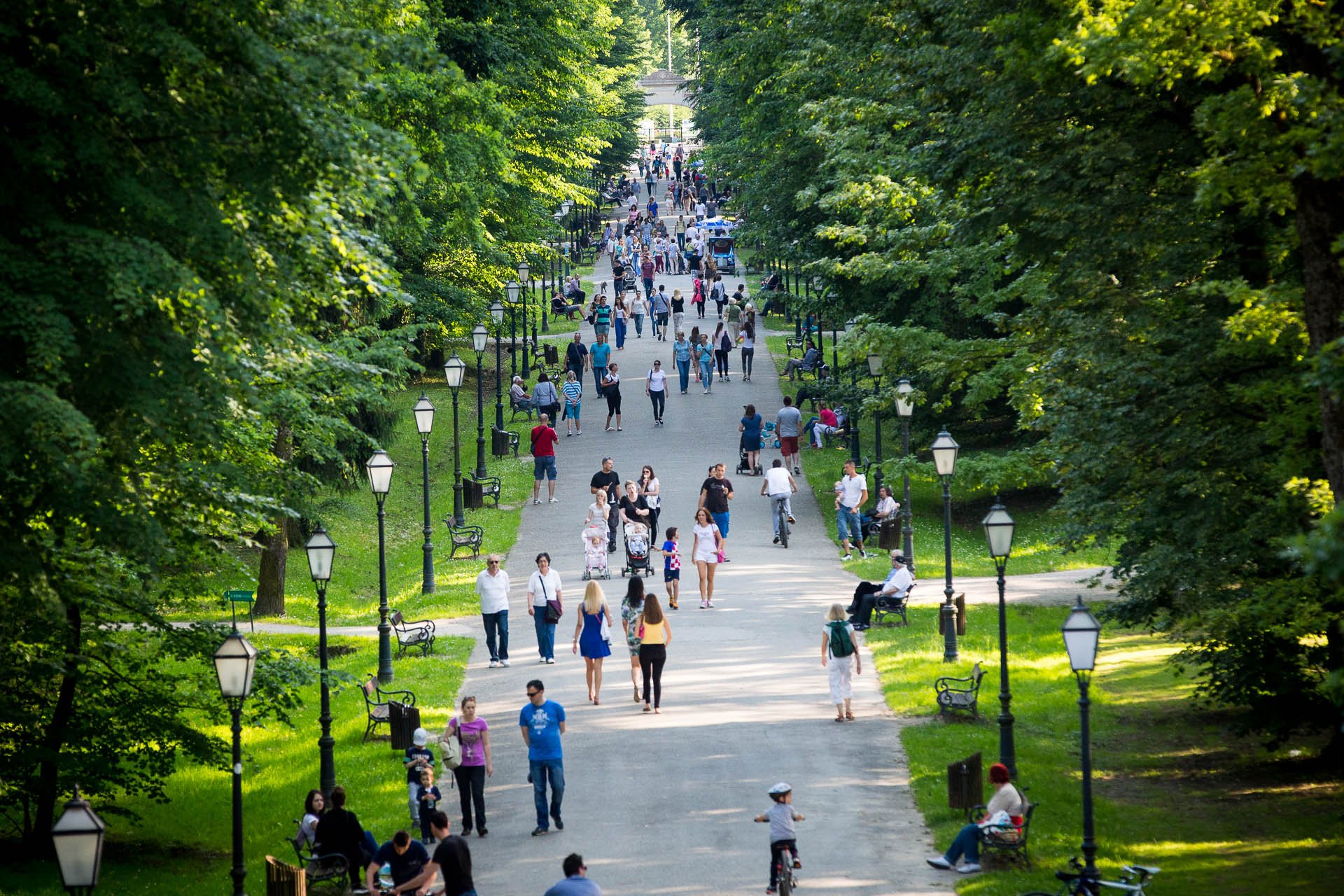
The park is very large. First there is a more refined area: there are cafes, a children’s playground, alpine slides, lakes,paved paths. If you go a little deeper, a real forest begins, in which shady groves smoothly turn into glades lit by the bright sun. However, comfortable benches and urns are installed throughout the territory, everything is very clean. Here it is pleasant to walk, look around, feel the fusion with nature.
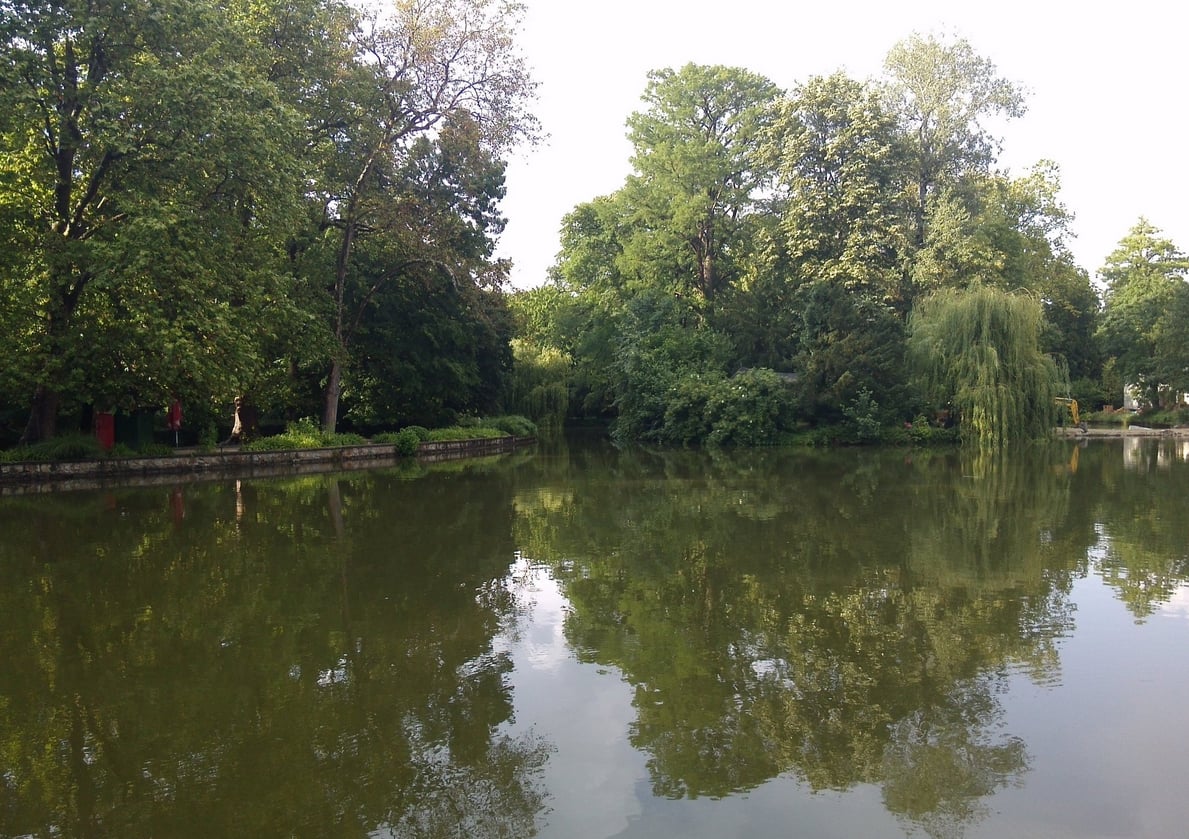
The Maksimir Nature Complex is also ideal for outdoor activities. Thanks to the different terrain with different heights and a variety of paths, runners and cyclists choose routes that are convenient for themselves.
Many people here walk with animals. By the way, there is a zoo on the territory of Maksimir. Although there are not too many animals, they are all kept clean and it is a real pleasure to look at them.
- Maksimir is open to the public daily from 9: 00 until sunset, and the zoo is open until 16: 00.
- Admission to the park is free.

